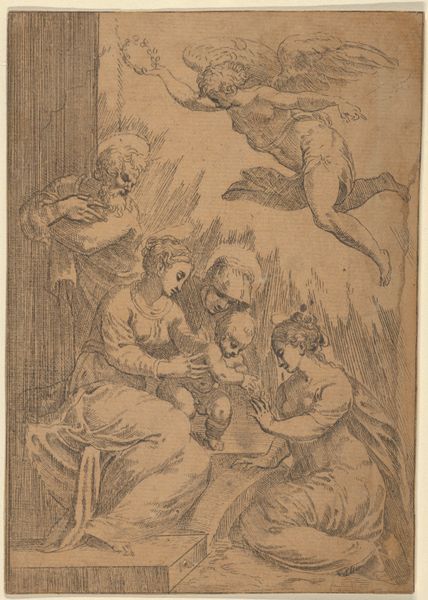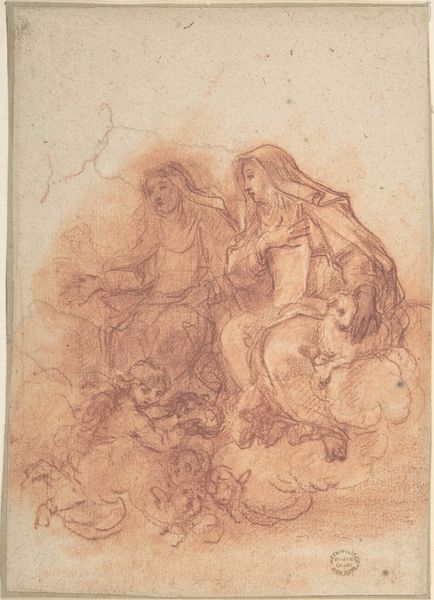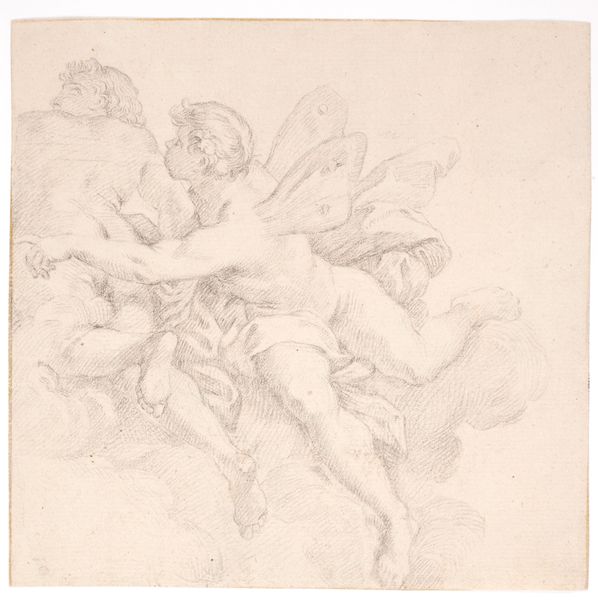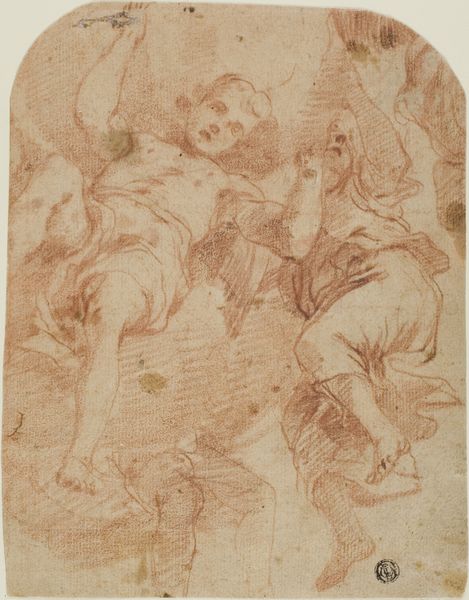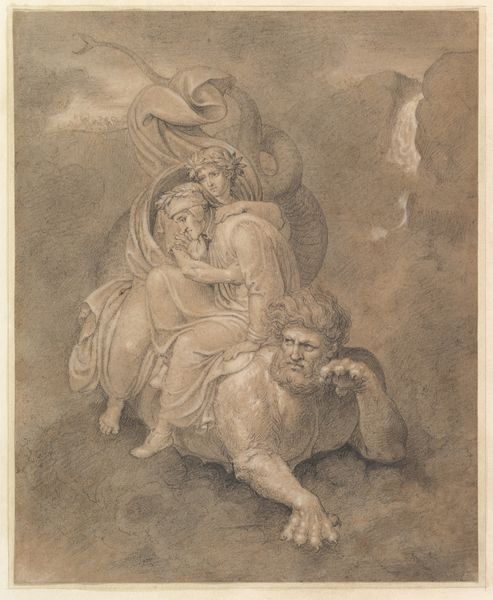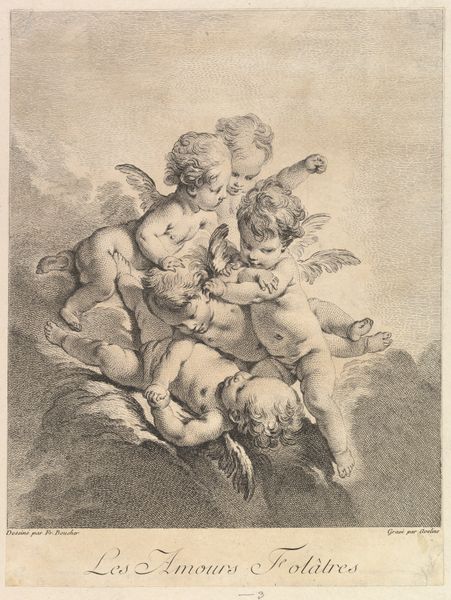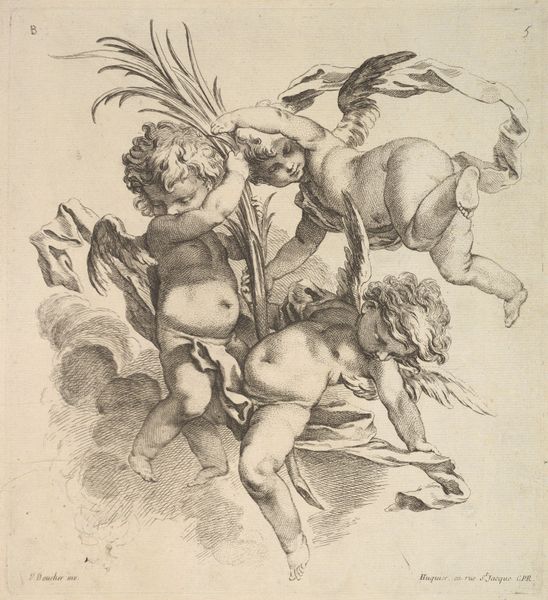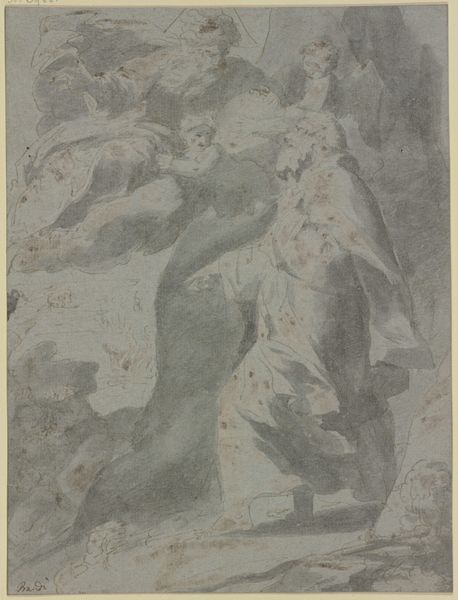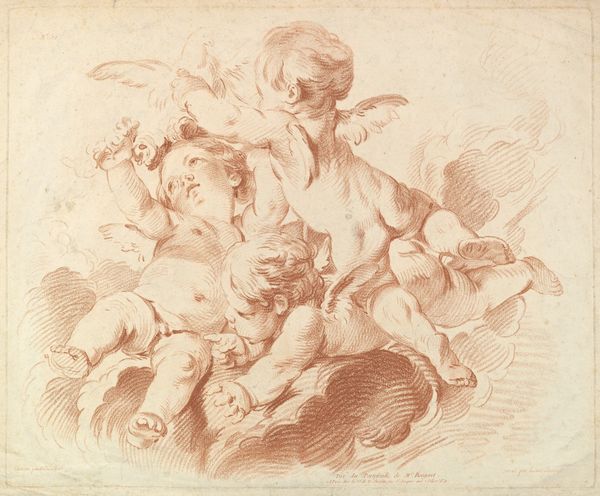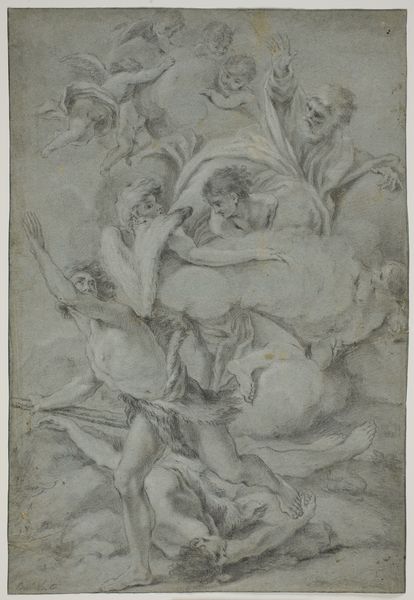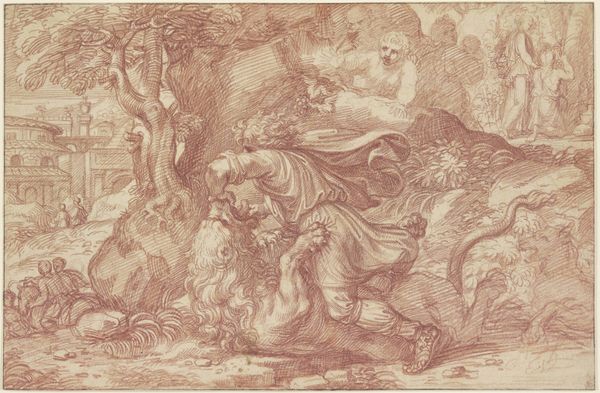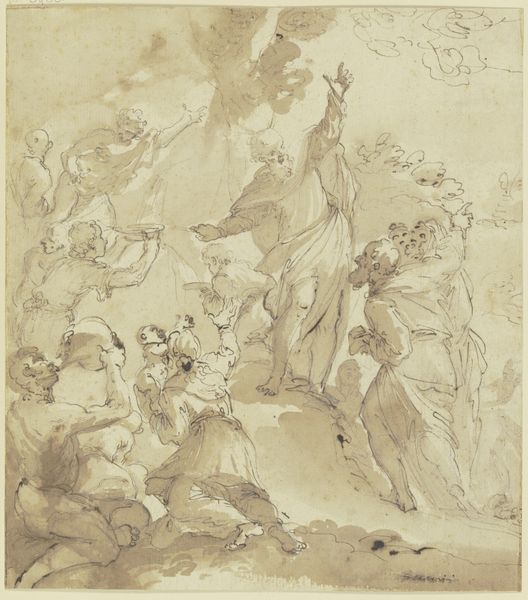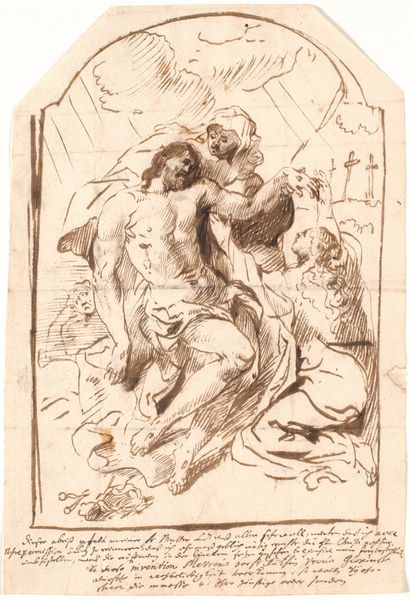
drawing, print, paper, fresco, chalk, charcoal
#
drawing
# print
#
charcoal drawing
#
paper
#
fresco
#
11_renaissance
#
oil painting
#
pencil drawing
#
chalk
#
charcoal
#
history-painting
#
miniature
Dimensions: 315 × 247 mm
Copyright: Public Domain
Curator: Here we have an intriguing piece attributed to Peter Paul Rubens, aptly titled "Cherubs and Putti." It's rendered in chalk and charcoal on paper, its date of creation, unfortunately, is not known. Editor: Immediately striking, isn't it? There's a playful, almost tumbling energy about these cherubic figures. And the charcoal work, with its smoky gradations, creates such an ethereal, dreamlike mood. Curator: Indeed. Consider the social context. Rubens and his workshop mass-produced imagery. A drawing like this likely served a functional purpose, either as a preparatory sketch or a study of form before translating these figures into a larger, perhaps more permanent medium. This blurs lines between artistic inspiration, a reproductive study, and pure visual craftsmanship. Editor: Precisely. Note how these cherubs, these "putti," operate as symbols. Historically, these winged babies signify divine love, innocence, and even salvation in religious contexts. They often act as mediators between the earthly and divine realms, injecting sacred messages and allegories within these more significant scenes, acting almost like divine messengers within the art's overall symbolism. Curator: Absolutely, but beyond their symbolic role, consider the economic implications of rendering this type of image in such quantity and considering all those labor hours of producing each of the components. This was a thriving visual commodities market with a dedicated, organized process in which various artisans are creating artwork to fulfill a religious, political and domestic need. The level of skill across the different aspects would greatly influence what could be considered of high artistic merit within society. Editor: And their ubiquitousness shouldn't diminish their symbolic weight. These symbols become cultural building blocks. They seep into collective memory, informing our understanding of beauty, virtue, even innocence, regardless of what their method of reproduction is. It’s quite brilliant to examine how their visual language transcends mediums. Curator: Yes, tracing those interrelationships between visual vocabulary and societal values adds such richness. It highlights Rubens' skill and the workshop culture as a complex web of visual design, mass production and labor that reflects both his artistic capabilities, economic status and his era’s specific set of needs. Editor: Thinking about it has changed the way I viewed the image as well. It also highlights this incredible ability of symbolism in art and helps us interpret a shared language. Curator: An insightful perspective indeed! It shows the real value is in thinking about art’s production in its era.
Comments
No comments
Be the first to comment and join the conversation on the ultimate creative platform.
